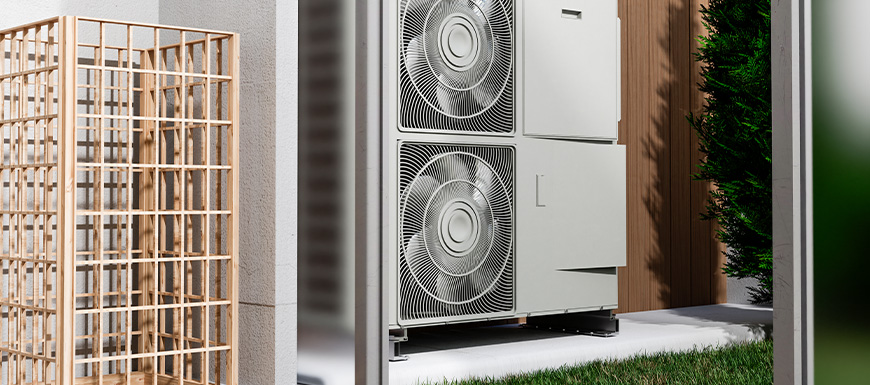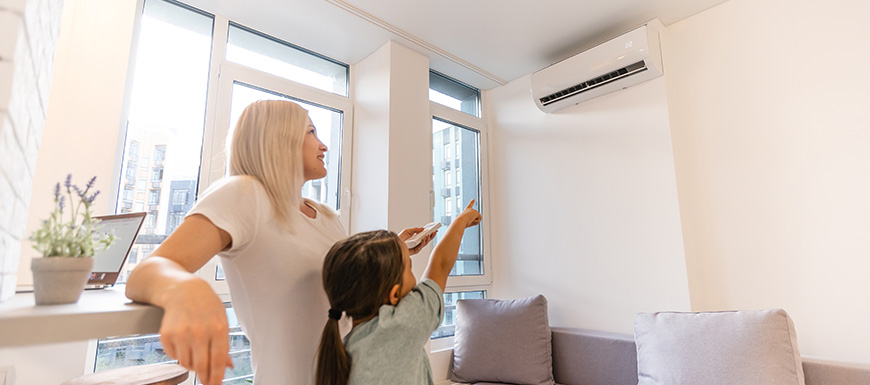
Canada is infamous for its winters. We get teased about living in igloos, travelling by dog sleds, and being buried 6 feet deep in the snow. So many people, and dare I say especially our southern neighbors, fail to realize just how hot it can get, especially in Ontario. Did you know that the most southern point of Ontario is the same latitude as the most northern point of California? In the last decade, climate change has brought some record-breaking temperatures. Just look at Toronto in 2021. The city normally experiences an average of 4.1 days above 30 C, that year it had 12. For a total of eight days the temperature didn’t go below 29.9 C during and the afternoon and remained above 20 C for some sweltering nights. Its no wonder then that air conditioning purchases are on the rise.
In fact there is now an ongoing debate of whether air conditioning should be considered a fundamental right, putting summer cooling on par with winter heating. Joanna Eyquem, managing director at the University of Waterloo’s Intact Centre on Climate Adaptation shared in an interview “We’re looking at the right to live in a safe environment, and extreme heat has moved very much up the agenda. We need to shift Canada from a cold-climate mindset to a hot-climate mindset to prevent more deaths.” In 2021, 595 people died in British Columbia alone as a direct outcome of one of the longest and hottest heat waves ever recorded in Canada.
These hot days are increasing Canadian’s demand for cooling, with three in five households reporting having some type of air conditioner in 2019. In Ontario that number is up to four in five households or 82%, with almost two-thirds reporting they had central air conditioning.

While the need is becoming more and more obvious, what kind of air conditioning is right for your home and family can still be confusing. First let’s look at the three main types of AC systems on the market:
1 – Central Air Conditioning
The most common system to cool your home is central air conditioning, where air is distributed through the ductwork. A split system can be a cost-efficient option where the refrigerant circulates between the inside unit where the heat is absorbed and the outside unit where the heat is expelled. Cool air is then distributed by your furnace. Whereas packaged central air conditioners have both parts inside the same unit located outside of your home. Warm air is pumped to the unit to cool and then it returned back to the home.
The advantage of either central air system is they provide cooling to all rooms in the home, not to select locations. They are reliable and very quiet. Plus, when you install a smart thermostat, you can control the temperature from your mobile phone and set up your preferences and schedule. If done properly this will bring you savings on your monthly hydro bill.
2 – Portable Air Conditioners
Portable units do not rely on your ductwork and can be moved from room to room inside your home. These units are placed on the floor where the heat can be discharged through a window vent kit. They are very energy efficient and can be up and running in 10 minutes, avoiding the installation fees of central air. These units are also effective at cooling in a small space, typically taking care of up to 500-700 square feet. This makes them a good choice for garages, dens, recreation rooms and offices. Many are in fact a triple threat combining the functions of AC, dehumidifier, and a fan all in one. They can be moved around on wheels but are limited by the length of tubing that connects the unit to the window kit.
They are however, one of the nosier options. This is because the evaporator fan is working hard all the time to evaporate the condensed moisture that collects within the unit. They can also be an eye sore, taking up valuable real estate on your floor and the look and function of one of your windows.
3 – Window Air Conditioners
Used to cool single rooms, these units are ideal for bedrooms or apartments. They are the cheapest option out there to enjoy cold air in one space. Units can be bought with the mounting bracket and accordion panel to fit a wide range of window sizes and are generally easy to install. Some window air conditioners have varying cooling levels and options. Some units will turn off when you reach the level set while others will stay on maintaining the desired temperature.
These units are quieter than portable options and don’t take up any floor space. They will however use up one window for the season. They are also energy efficient, costing as little as $20 per month to operate.

So how do you choose and does size really matter?
Clearly your budget will play an influential role in what type of unit you purchase. But another deciding factor is the amount of space you need to cool, determining the size of air conditioner you require.
To find the best unit for your home there are several criteria you need to consider. You should take into account:
Air conditioners are measured funnily enough by “tons” to describe their cooling capacity. For example, a one-ton AC unit can cool roughly 600-800 square feet. Most central air conditioners start at around 1.5 tons and then increase by .5 tons. In Ontario, the average single-family home is 1,520 square feet, so most people who are opting for central air will pick a 2.0-ton unit.
Choosing the right size AC unit for your home is important and is worth doing the extra research by consulting with a few suppliers. If you pick the wrong size, it will affect your energy costs, the lifespan of your energy equipment and the quality of your comfort.
Let’s break it down.
An undersized unit will:
An oversized unit will:
Both scenarios result in your home not being as comfortable as it you want. As with most major purchases for your home your best bet is to speak with a few companies, shop around and check in with your friends. Chances are they’ve already been down this road and may have a good reference for you to boot.

Energy Saving Tips
No matter what unit you end up buying with the price of everything these days and the rising costs of electricity you’ll want to do all you can to save money. Here are a few tips to keep in mind.
Picking the right air conditioner really just depends on setting your budget, doing some research, and determining the comfort level you want. Maybe all you need is your bedroom to be cool for sleeping, a home office for working, or maybe you have a full house, and the family needs central air. Take the time to make the right choice so you can sit back this summer and enjoy the respite from scorching afternoons and sweltering nights.
